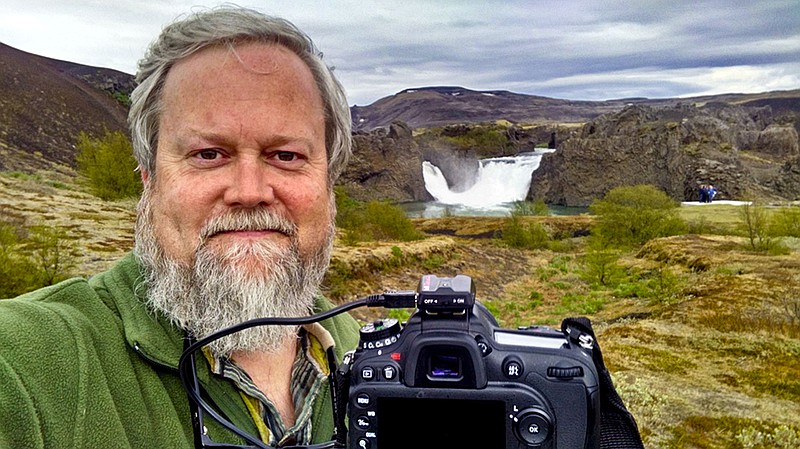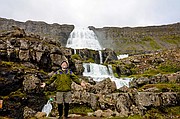Locals make lifelong dreams a reality
Often there is no perfect time to take that long-awaited trip of a lifetime. Expenses aside, it can seem intimidating - though the perspective gained often helps us better enjoy our lives back home. For three Chattanoogans, 2016 proved to be their year to grab life by the horns, so to speak, and go, whether that experience included being nearly stampeded by more than a dozen enraged bulls, ascending the highest peaks of the Tour de France or honing photography skills in the fjords of Iceland. By simply making the decision to venture out, their lives were changed forever, and their stories just might inspire your best year ever in 2017. * Chattanooga-based cycling group takes on Europe's toughest and most famous climbs* Thoughts of mortality, growing wanderlust lead photographer to 'Land of Fire and Ice'* Chattanooga-transplant travels to Spain to run with the bulls
Steve Rogers was far from an old man. He hadn't even hit 50 yet, and still had a full head of, admittedly graying, hair. However, it seemed he was constantly being stunned by news on social media: Friends and acquaintances from his school days were passing away.
Heart attacks and car accidents lingered on his mind when he thought about how much time he had left, and what he wanted to do.
Rogers had traveled extensively throughout the U.S. when he was younger, completing week-long treks in the Rockies and exploring the rainy forests of the Northwest. More recently, he'd traveled to British Columbia and the Yucatan Peninsula to pursue nature photography. He craved something outside of North America, though; his growing wanderlust demanded he see more of the world.
Browsing online photography forums, he noticed a recurring locale filled with gorgeous waterfalls and remote, pristine glaciers: Iceland.
In June 2016, Rogers made his second trip to the remote island nation. The first, in September 2015, was to tour the country, while the most recent was to capitalize on the photographical opportunities found in the stark beauty of the countryside. As Rogers describes it, you can be standing among mossy rolling hills, overlooking a 50-foot waterfall cascading from volcanic floe, but a 20-minute drive down the road will have you in the midst of what he calls "moonscape," where glaciers have scraped the earth of living matter, leaving behind pockmarked and cratered soil.
Iceland is often touted as one of the most beautiful countries in the world, so Rogers says he was surprised by the affordability of the trip. Round-trip plane tickets were a relatively inexpensive $600. Rogers further saved money by renting a conversion van for around $100 a day and sleeping in it instead of paying for an expensive hotel. A self-described "old Deadhead," it wasn't his first time sleeping in a car.
The van served him well as he toured around the country, which is roughly the same size as Georgia but with only 300,000 people - less than the population of Hamilton County. The capital, Reykjavik, has a population of about 120,000, making it home to more than a third of Iceland's residents.
The countryside felt even more sparsely populated during the times Rogers traveled to photograph, which typically took place around 2 a.m. In June, Iceland's nights nearly vanish as the sun stands adamant and undeterred in the sky. The hours of midnight sun when the sun flirts with the horizon offer the perfect light for shooting the country's hundreds of waterfalls, Rogers says.
Nowhere else in the world are there so many waterfalls per capita as in Iceland. Rogers recalls one 3 a.m., after a hike from Skógafoss in pouring rain. He was feeling frustrated that the shot he wanted wasn't coming to fruition when he stumbled across a geothermal hot spring, adorned with moss and jet black rock. He shrugged and got in, sipping from the fifth of whiskey he'd brought along as he soaked in the warm water while cold drizzle rained down on him from the bright sky.
"You're sitting there in a spot that, during the day, could have had 50 people there," he says. "But at night there's no rush, nothing hectic at all, ever."
The isolation brought Rogers comfort. With little, if any, human interaction for hours at a time while on the island, he used the time to think and write in his journal.
"Sometimes I'd be at a waterfall for a couple of hours just waiting for the light to get right. It definitely gave me time to reflect and to enjoy being alone," he says. "I was talking with a friend on the trip who said she'd go crazy. But she wants me to go to Paris and I said, 'I'd go crazy there!'"
Solitude withstanding, Rogers' best days were in Seyisfjörur (say-dis-FYER-der), a small fishing village with fewer than 700 people on the eastern shore. It was there he enjoyed the freshest Icelandic cod he'd ever eaten and lived "as an Icelandic citizen" for a few days, shopping in the town square and mingling with natives during lunch and over pale homemade beer from what he now calls his favorite pub in the world, Kaffi Lara.
"It's right on the top of the fjords, so you're literally sitting on the back deck on top of these steep-walled cliffs," Rogers says. "It's one of three places in Iceland that makes their own beer."
At Kaffi Lara, as he spent an evening swapping stories of adventure, travel and beer homebrewing with locals, Rogers nearly forgot his status as a tourist. It was the most welcomed he'd ever felt in a foreign land.
"I never once felt out of place," he says. "People told me to let them know if I came back so they can take me sailing. They have such a kind, peaceful culture."
And Rogers is definitely going back. Come mid-December, when the country is plunged into near-eternal darkness, he's taking another flight to photograph the Northern Lights. With even the possibility of a permanent move on his mind, Rogers recalls a traditional Icelandic saying, "Af góu upphafi vonast góur endir."
A good beginning makes a good ending.

